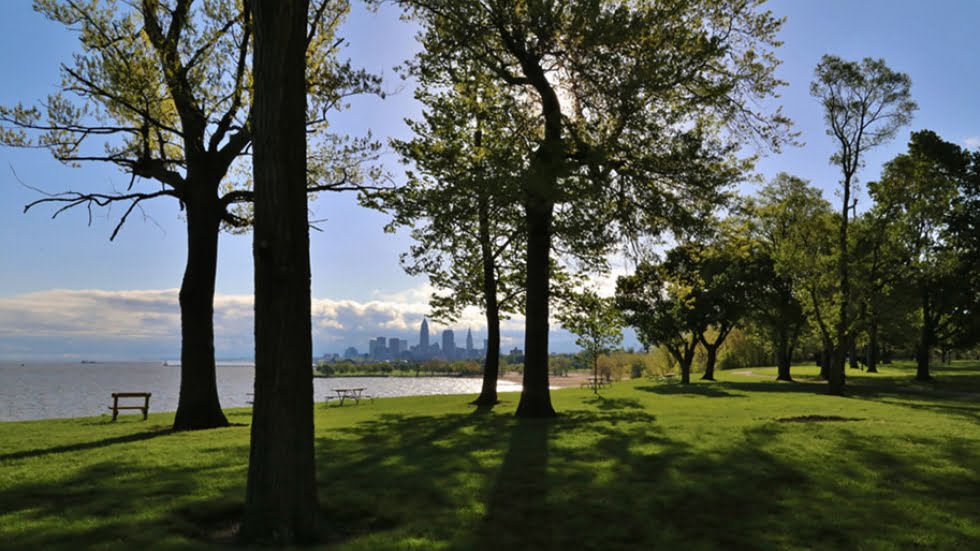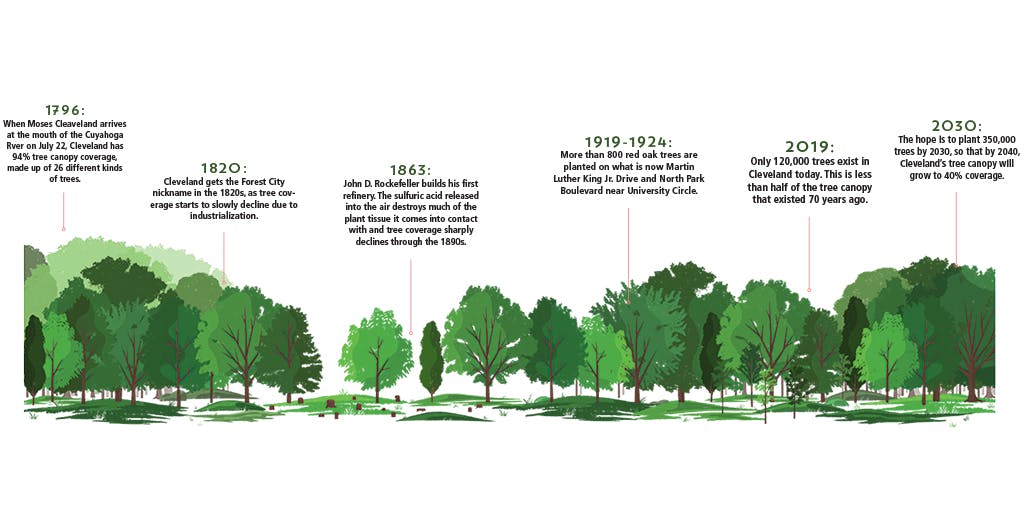Posted by Ben Gooden on Thu, Sep 17, 2020 @ 3:23 AM
Cleveland’s Approach To Restoring Its Canopy

Cleveland was once a Forest City with 26 different tree types and 94% tree canopy coverage.
However, the promise of industrialisation and modern living have sadly left the city with only 19% of tree canopy by 2019. While the number of tree species has remained intact, the quantity of each variety has decreased substantially.
Different organisations across the city are now making a genuine effort to restore Cleveland’s tree canopy in an attempt to ensure there are enough trees to sustain a better quality of living within their city – today and into the future.
What is Cleveland’s present situation?
The Cuyahoga County Urban Tree Canopy Assessment reported in December 2019 that the coverage of the local tree canopy has diminished from 37% to 35% between 2011 and 2017.
This 2% loss, while it may look small, equates to 6,500 acres of trees or 5,000 football fields. But more than anything, this dwindling tree canopy causes detrimental effects to public health. Trees provide sufficient shade and clean air, which can eliminate stress and reduce respiratory and heart problems. Without them, citizens can often be more susceptible to sicknesses.
Cleveland Tree Coalition found that due to Cleveland’s tree canopy, there are 1,200 fewer incidences of adverse health effects such as hospital visits and respiratory symptom every year!
It’s no surprise, then, that the well-being of the local communities will be negatively impacted if the consistent and considerable loss of their tree canopy continues.

Source: https://clevelandmagazine.com/
What is Cleveland’s solution?
With the support of public officials and local residents, Cleveland Tree Coalition has been paving the way for the restoration of Cleveland’s tree canopy since 2015.
They have planted over 2,500 trees already, but still need to grow 350,000 more in the next 10 years to improve the city’s tree canopy from a 19% to 30% coverage by 2040.
Since larger species of trees create a wider canopy, part of their strategy is growing the right kind of trees, like Honey locust trees. Cleveland City Council has also implemented a policy in 2018 that requires Developers to add tree preservation plans into their development projects, ensuring that any trees that are removed during construction will be replaced.
Cleveland’s volunteers are aiming to increase their efforts in upkeeping their current trees and maintaining the health of those they have recently planted. That’s because spending millions of dollars planting new trees won’t produce great results and returns in the long run if they die in just a few years.
At Citygreen, we support these kinds of tree planting and maintenance initiatives.
That’s because we believe that having more green spaces is the key to better living, especially in cities. This is why our team of experts and project consultants research best practices and approaches to allow trees to live harmoniously alongside the advancements of every city.
We have tree products and solutions to ensure every city can cultivate healthy green spaces for their local communities.
To learn about our urban landscape solutions, head to https://citygreen.com/solutions/soil-for-healthy-trees/

